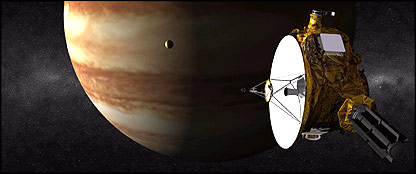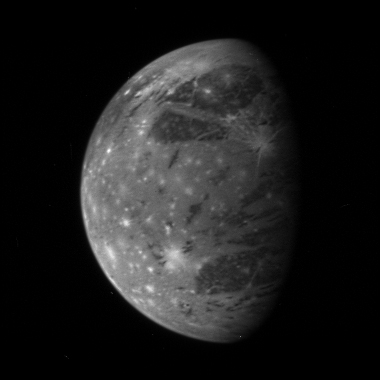The spacecraft uses Jupiter's gravitational field to gain speed for the eight-year journey to Pluto

NASA's New Horizons spacecraft, which was launched a little over a year ago, passed by the giant planet Jupiter yesterday morning. The flight was designed to test the flight instruments before receiving the momentum from Jupiter's gravity to accelerate it further on its flight to Pluto and its moons.
The plutonium-powered spacecraft approached at its closest point, 2.3 million km from Jupiter, on Wednesday at 00:43 EST (07:43 Israel time) and its speed accelerated to about 14 thousand km/h and now its speed is 84 thousand km/h It should be noted that even earlier it was the fastest spacecraft launched from Earth, but without Jupiter's gravity, it would have taken three more years to reach Pluto.
"Jupiter was just a landmark to the destination, the planet Pluto" said John Spencer, the deputy responsible for the scientific team of the encounter with Jupiter", a comment by the way that is not accepted by many astronomers, since a few months after the spacecraft left and to the displeasure of Hogia and his companion The New Horizons spacecraft announced that Pluto is no longer a planet.
The pass provided the spacecraft with its first close-up view of Jupiter since the end of the Galileo mission in 2003. It will be the last photograph until the Juno spacecraft arrives there in 2016.
As mentioned, even after the additional acceleration, New Horizons, which weighs half a ton, will need another eight years to reach Pluto because Pluto is 5 billion kilometers from Earth. This transition also allowed the cold center personnel to perform a general systems test for the spacecraft's scientific instruments. "We wanted to test the spacecraft under conditions severe enough to detect even the smallest malfunction," says Dr. Alan Stern, the program's principal investigator from the Southwest Research Institute in Colorado. "Using our high-tech devices, we intend to produce valuable information and we no longer have the patience to wait for the data to reach the ground."

The fair moon Ganymede as photographed by New Horizons
In this project, the spacecraft will make over 700 observations of Jupiter and its large moons until June. The spacecraft will scan the turbulent atmosphere and the magnetic shell or magnetosphere of Jupiter, perform a detailed survey of the rings, including a search for small moons that may accompany them and hide within them, and map the large moons of Jupiter such as Europa and Callisto. New Horizons will also survey the volcanic activity on the moon Io and focus on the Little Red Spot, a storm developing south of the famous Great Red Spot.
More photos taken by New Horizons in Jupiter

2 תגובות
For the same reason that, a ball rolling at speed v without friction on a flat surface - on the way it enters downhill with a slope (let's say 45 degrees) and accelerates with an acceleration of about XNUMX m after which it continues on the same slope only upwards and returns to the same height of the surface. Miraculously, its speed will finally increase ( check).
Why did she grow up? From one that speed is an integral of acceleration over time, if the time of exposure to acceleration is longer the increase in speed will be greater. The ball's descent time is longer than its ascent time (since the average speed during the descent is smaller than the ascent).
Exactly the same way as a satellite passing by a star!
Successfully.
How does the spaceship accelerate with the help of a star's gravity? Is it her rotational speed or does she need any self propulsion help. After all, in principle, with an engine that can direct its thrust force, it will be able to steer and accelerate independently - or am I missing something?